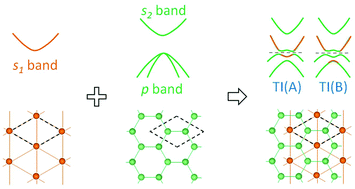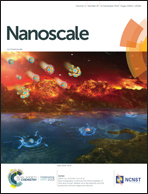Orbital design of topological insulators from two-dimensional semiconductors†
Abstract
Two-dimensional (2D) materials have attracted much attention because they exhibit various intrinsic properties, which are, however, usually not interchangeable. Here we propose a generic approach to convert 2D semiconductors to 2D topological insulators (TIs) via atomic adsorption. The approach is underlined by an orbital design principle that involves introducing an extrinsic s-orbital state of the adsorbate into the intrinsic sp-bands of a 2D semiconductor, so as to induce s–p band inversion for a TI phase, as demonstrated by tight-binding model analyses. Based on first-principles calculations, we successfully apply this approach to convert CuS, CuSe and CuTe into TIs by adsorbing one adatom per unit cell of Na, Na0.5K0.5 and K as well as Rb and Cs. Moreover, if the chalcogens in the 2D semiconductor have a decreasing ability of accepting electrons, the adsorbates should have an increasing ability of donating electrons. Our findings open a new door to discovering TIs by predictive material design beyond finding preexisting TIs.



 Please wait while we load your content...
Please wait while we load your content...